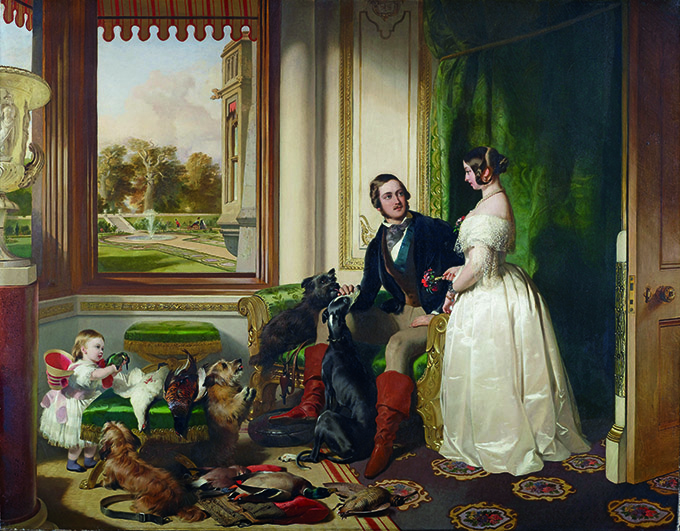
From their early courtship to Albert’s untimely death, the love affair between Queen Victoria and Prince Albert showed a warmer side to the Queen
Though their affection for each other has been well documented – not least by Queen Victoria herself, who wrote openly of her love for her husband in her diaries – it was far from love at first sight for Queen Victoria and Prince Albert, at least on Victoria’s part.
First cousins – Albert’s father was the brother of Victoria’s mother – Queen Victoria and Prince Albert actually met a couple of years before their engagement.
The pair first met in 1836, when Albert travelled from his native Germany to London for Princess Victoria’s 17th birthday. Though Victoria later wrote to her uncle, King Leopold I of Belgium, thanking him for introducing them and describing Albert as having “the most pleasing and delightful exterior”, she was determined not to rush into marriage. It wasn’t until two and a half years later that she really let herself fall for Albert.
In the ensuing years since their first meeting, Albert had written to Victoria many times. It seems his visit in the autumn of 1839 may have been to confront her about stringing him along. Whatever the reason, the outcome was good. Five days after his arrival at Windsor, Victoria proposed to Albert, as custom dictated.
Queen Victoria’s proposal
Writing in her journal about the proposal, Victoria recalled: “I said to him that I thought he must be aware why I wished him to come here, and that it would make me too happy if he would consent to what I wished (to marry me); we embraced each other over and over again, and he was so kind, so affectionate; oh! To feel I was, and am, loved by such an angel as Albert.”
And so began a love affair as passionate as the one portrayed by Jenna Coleman and Tom Hughes in Victoria. While it would be easy to presume the programme makers had ramped things up to increase ratings, we know from Victoria’s journal and correspondence between the couple that their desire for each other was very real. And this is despite their daughter Beatrice doctoring her mother’s diaries to remove all mention of bedroom talk.

In a letter written shortly after their engagement, when Albert had returned to Germany briefly, he wrote: “I need not tell you that since we left, all my thoughts have been with you at Windsor, and that your image fills my whole soul. Even in my dreams I never imagined that I should find so much love on earth.”
Trouble in paradise
But despite it being a love match, like most couples, Victoria and Albert had their arguments. Victoria was prone to temper tantrums. Her mood swings were such that some historians claim she may have inherited the ‘madness’ of her grandfather, George III.
Nevertheless, despite the arguments, Albert always managed to get back into Victoria’s good books. She called him her ‘angel’ and wrote of her pride in his achievements, particularly the Great Exhibition of 1851.
When Albert died of typhoid fever in 1861, Victoria was devastated. She wrote to her eldest daughter, also called Victoria, asking: “How I, who leant on him for all and everything – without whom I did nothing, moved not a finger, arranged not a print or photograph, didn’t
put on a gown or bonnet if he didn’t approve it shall go on, to live, to move, to help myself in difficult moments?”
For years Victoria mourned Albert, retreating from public life and wearing black for the remaining 40 years of her life.
For many years, Victoria’s grief bordered on the obsessive. It’s said she ordered servants to continue bringing hot water into his room for his morning shave. However, the myth that Victoria ordered London railings to be painted black as a mark of mourning has been discredited.





 © 2024
© 2024